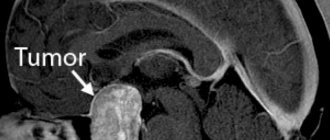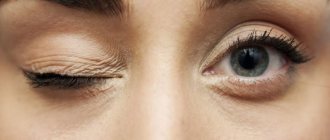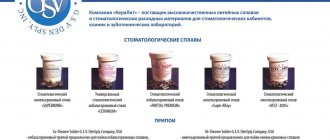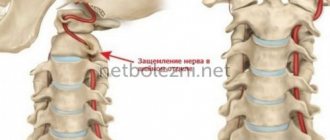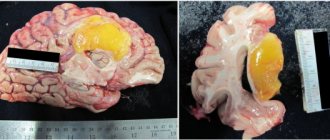How to properly treat panic attacks? What are the symptoms and is it possible to cope with a panic attack at home? If you've ever experienced a feeling of shortness of breath, coupled with a rapid heartbeat and anxiety, you've probably wondered how to get rid of a panic attack for good. In this state, a person feels a wave of unreasonable fear, which causes dysfunction of the central and autonomic nervous systems. Uncontrollable actions of the body often occur, for example: high blood pressure, sweating, dizziness, lack of air, palpitations, etc. A panicky fear of death arises. Such an experience can last from several minutes to several hours. In severe conditions, a person remains in this state constantly, with periods of deterioration and improvement of the body’s condition. Signs of such a disorder of higher nervous activity can often be observed in residents of large cities.
We can help everyone who is still wondering where to treat panic attacks in Moscow, and those who have already had unsuccessful therapy experiences. Our methods of treating panic attacks are completely safe and time-tested. We have been helping people restore their health for over 30 years.
Treatment of panic attacks in the clinic
The Transfiguration Clinic has been operating since 1990․ This is the first private company in the post-Soviet space․ We have awards from state and non-state foundations and are recognized as the best in Russia. The process takes place exclusively using proprietary technology, which has been developed since the clinic began operating and is being more and more modernized every year․ The technology has shown its high productivity over time. Treatment of panic attacks in the clinic may include a set of procedures, so we try to take into account the wishes of the patient himself and choose the most optimal option for the person. The team hardly changes, so the practices used do not lose their uniqueness, as they adapt to realities and become safer to use.
Benefits of therapy in our center
Neutralization of the disorder occurs in stages: Initially, each client is consulted and problems are diagnosed․ The outpatient part lasts 1.5 months, during which the patient will attend classes 2–3 times a week․ The next stage is clinical observation – from 6 to 9 months․ During the period of relapse, you can contact specialists at any time․ At these stages, methods that are recognized as effective throughout the world are used․ For example, rational psychotherapy, phototherapy, hypnotherapy․ These procedures are complemented by massages, physical therapy and doctor-prescribed diets․ To achieve results, it is important to remember that the problem cannot be eliminated with the wave of a magic wand․ This is a complex multi-step process that will lead to the desired outcome, the main thing is to have enough time․
Clinic for the treatment of panic attacks in Moscow
Over 30 years, the Transfiguration Clinic has accumulated significant experience in treating panic attacks, phobias, obsessive-compulsive disorders and other problems with the nervous system. We have several obvious advantages that set us apart from the general number of hospitals.
- Work around the clock․
- Call a specialist to your home․ We understand that not all of our clients have sufficient resources and energy to reach us․
- Treatment of disorders in both mild and severe forms.
- We help even if previous treatment was not successful.
- Development of unique recovery programs, prescription of special medications. We do not believe that there are “standards” by which anyone can be treated, so we only take an individual approach.
- Helping patients of all ages, because anyone can face this condition.
- The presence of comfortable rooms in the center, providing the patient with constant attention from the staff.
- Affordable prices without additional costs and hidden fees, which you can find on our website. In our proposals, we immediately present the entire range of necessary support to achieve the desired result.
- Using effective and scientifically proven techniques.
- The use of original drugs, we do not replace drugs with cheaper “analogs”․
Signs of illness
Every person has experienced one-time signs of a panic attack. However, not everyone has this condition for a long time. The intensity of the underlying measure of anxiety attacks can vary widely: from a pronounced state of panic to a feeling of internal tension. When somatics comes to the fore, experts call this situation “uninsured.” A low level of the emotional component is more often observed in neurological and therapeutic activities, and also during the development of the disease, the degree of fear increases.
There are many symptoms of panic disorder. Among them.
- Rapid breathing and heart rate.
- Headaches and any other pain.
- Mortal fear.
- Muscle tension for no reason.
- Severe anxiety or panic.
- Shortness of breath and feeling of lack of air.
- Interruptions in the functioning of the heart.
- Apathy.
- Suffocation.
- Cold extremities or increased sweating.
- Dizziness.
- Increased blood pressure.
- Vomiting and nausea.
- Heaviness in the chest area.
- Feeling of a lump in the throat.
If you notice similar symptoms appearing, do not self-medicate․ Panic attacks can be treated in our clinic in Moscow․ It’s convenient, inexpensive, and most importantly – effective․
Remember that you should never delay treatment for panic attacks! It is worth turning to competent, qualified specialists who will work with you gradually and correctly.
For more detailed information, you can call the phone number listed on the website, write an email, or make an appointment․
Don't be afraid, we will definitely help you!
Short-term psychotherapy for panic attacks, phobias and obsessive-compulsive disorders
Panic attacks, phobias and obsessive-compulsive disorders are problems that a huge number of people face to one degree or another. Although according to official WHO statistics, about 10% of the population in developed countries suffer from these diseases, collectively called “anxiety-phobic disorders,” the real picture is more depressing. As you know, in big cities this percentage is much higher.
In the practice of a psychologist, often every second applicant has either a full-fledged anxiety-phobic spectrum disorder or its individual symptoms.
That is why both specialists and people far from psychotherapy need to know and be able to work with fears, panic attacks, obsessive states and insomnia. And it is best if it is knowledge and skills that meet the trend of our time - short-term psychotherapy.
Purpose of the seminar:
- To acquaint participants with the negative consequences of the influence of phobias on the psyche;
- Describe the main disorders based on high anxiety and fears: panic disorder, agoraphobia, social fears, fears related to one’s appearance and health, obsessive-compulsive disorder, generalized anxiety disorder and insomnia;
- To familiarize participants with the main theories of the origin of panic attacks, phobias and obsessive states;
- Offer a range of short-term treatment strategies for panic attacks, phobias, obsessive-compulsive disorder and insomnia;
- Learn how to conduct interviews and diagnostics to identify various anxiety-phobic disorders;
- Teach basic techniques and techniques for short-term treatment of panic attacks, phobias, obsessive-compulsive disorder, insomnia and generalized anxiety disorder.
In the seminar program:
- Definition, types and frequency of occurrence of anxiety-phobic disorders;
- Diagnosis, origin and mechanisms of functioning of panic attacks, phobias and obsessive states and insomnia;
- Theories of the origin of anxiety-phobic disorders;
- Short-term and long-term psychotherapy for panic attacks, phobias and obsessive states: pros and cons;
- Short-term treatment strategies for anxiety-phobic disorders;
- Getting started with panic attacks, phobias and obsessive states: interview, diagnosis, contract and its features;
- Short-term therapy techniques for panic disorder: relaxation methods (breathing techniques, progressive muscle relaxation according to E. Jacobson), exposure and prescriptions (“Logbook” and “Vow of Silence”);
- Short-term therapy techniques for fears: “Rapid Phobia Treatment,” “Systematic Desensitization,” and “Fear Fantasy” prescription;
- Instructions for clients who fear for their health (“Self-examination”);
- Instructions for clients for intrusive thoughts (“Stopping Thoughts,” “Blocking Reassurance Seeking”) and actions (“Changing Ritual”).
- Integrative work with generalized anxiety disorder: Fear Fantasy prescription, Behavioral Experiments techniques, Anahata breathing technique and Progressive Muscle Relaxation.
Basic methods used during the seminar
- Individual work, work in pairs, threes, group work;
- Theoretical and practical training;
- Review and analysis of practical cases;
- Analysis of the demonstration sessions and trial practical work.
As a result of participating in the seminar, you:
- Learn about the main anxiety disorders - panic attacks, phobias, obsessive-compulsive disorder, generalized anxiety disorder and insomnia;
- Learn to identify them in clients;
- You will understand where anxiety-phobic disorders come from;
- Learn about various short-term treatment strategies for panic attacks, phobias, and obsessive-compulsive disorder;
- You will master the skills of conducting interviews and concluding a therapeutic contract for working with anxiety-phobic disorders;
- Learn to work effectively and quickly with panic attacks, phobias, obsessive-compulsive disorders and other types of anxiety-phobic disorders.
The training seminar program is designed to teach:
- psychologists,
- psychotherapists,
- psychiatrists,
- teachers,
- 4th and 5th year students of medical and psychological faculties,
- social workers
- and everyone who, for personal or other reasons, is interested in the problems of psychotherapy for panic attacks, phobias and obsessive states.
1
1
Original treatment of panic attacks in the clinic
We treat panic attacks only with effective and proven techniques that have stood the test of time and shown to be highly effective. Already in the first hours you can feel a significant improvement in your condition.
If you are suffering and want to get rid of the feeling of frequent anxiety, contact the specialists of the Transfiguration Clinic. We successfully fight various psychosomatic manifestations; our specialists, using unique proprietary techniques and classical types of treatment, are ready to help you restore your psycho-emotional state.
Disease statistics
According to statistics, 5% of the Russian population is susceptible to these disorders. Women suffer from them most often. The onset of the disease is typical between the ages of 14 and 54 years, but in most cases it occurs in people in the age group from 20 to 40 years. Thus, the primary manifestations of the disease are observed at the most productive age. This disorder is characterized by disruption of metabolic processes in the midline structures of the brain.
Often, a panic attack itself can be a symptom of another pathology: coronary heart disease, gastric ulcer, mental disorder. In this case, anxiety goes away after getting rid of the underlying disease.
The doctor chooses the treatment method depending on the type of disorder and clinical features. Single attacks and constant anxiety with the formation of avoidance rituals require different approaches to treatment. In some cases, drug therapy is used, in others - psychotherapeutic methods.
Panic disorders occupy a leading position among the reasons for seeking medical help. The main source is most often difficult life situations that a person has previously experienced or is experiencing during the period of the onset of the disease, as well as accumulated stress. The appearance of disorders of this type can also be facilitated by the use of various chemical substances with psychoactive properties.
Telephone consultation Individual discounts and bonuses for treatment
The doctor's consultation
Therapeutic programs
Treatment programs are tailored to a person’s individual parameters based on the latest scientific data and practical approaches in neurology and psychotherapy.
Treatment of a panic attack is carried out comprehensively. Our specialists combine pharmacological and psychotherapeutic methods and provide consultations to relieve symptoms until the desired result is achieved. Each session, each psychotherapeutic manipulation leads to a certain result. The doctor monitors the dynamics and how the patient’s condition improves, adjusting the treatment program along the way. If a panic attack occurs in an acute form, the psychotherapist takes a set of measures to urgently relieve symptoms and restore the patient’s mental state.
The initiation of therapy is based on diagnostic measures and emergency medical care, which include:
- reception and examination of the patient by a psychiatrist-psychotherapist;
- examination by specialized doctors;
- stopping an attack;
- preventing recurrent attacks;
- relief of derivative syndromes;
- preventing relapses.
Preventing panic attacks
To prevent unpleasant symptoms from reoccurring, panic attacks are prevented. The following methods are used:
- Concentrate on breathing exercises. Imagine how oxygen spreads throughout the body, saturating the organs. At the same time, pronounce calming expressions.
- Alternately relax and tense the leg muscles, stretching the socks. Such actions will help control chills and hot flashes.
- They meditate. They turn on soothing music, concentrate on recovery, and suggest that attacks will not happen again.
- They normalize their daily routine - sleep at least 8 hours a day, rest more and walk outside, eat well, and don’t skip meals. If the glucose level decreases, new attacks will appear.
- Avoid drinking alcoholic beverages, black tea, and coffee.
- They eat foods rich in vitamins - oranges, apples, dried apricots, cottage cheese, cheese, beef.
Life without panic attacks is possible. A healthy lifestyle, a balanced diet, and the ability to enjoy the little things will give an incentive to happiness and restore peace of mind. This will get rid of the attacks and erase the memories of them.
Panic attack
If a loved one is experiencing a panic attack, it is important to know what to do. An attack is a condition in which the patient suddenly begins to behave suspiciously, fearing the surrounding environment. He develops anxiety and fear. Attacks occur for various reasons, most often due to stress.
An attack of PA is an insidious disorder, the symptoms of which are disguised as other diseases. It is characterized by a feeling of anxiety. The patient does not immediately recognize the danger. Symptoms of an attack:
- increased sweating, often alternating with chills;
- suffocation, shortness of breath;
- rapid heart contractions;
- nausea, headache.
A patient with an attack complains of chest discomfort.
Seizures can be spontaneous (appear for no reason), situational (occur in conditions that seem to be traumatic) and conditional situational (under the influence of a specific stimulus).
In a patient with such a disorder, panic worsens - the patient is afraid of death to such an extent that he goes crazy. Ordinary things seem unusual and abnormal to him. He begins to become hysterical, he wants to scream and call for help. The nature of the attack differs depending on the person’s personality and requires individual consideration.
What to do during panic attacks
What to do about panic attacks? If a person has managed to maintain control over himself, when he feels a panic attack is approaching, he should distract himself. Methods:
- count surrounding objects - the number of seats on the bus, the number of people wearing a hat, etc.;
- sing or read poetry;
- perform relaxing techniques - breathe deeply into the stomach (exhale more slowly than inhale). Use a paper bag, palms;
- use self-hypnosis methods;
- engaging in physical activity is a way to get rid of cramps, relax muscles, eliminate shortness of breath, and calm down;
- massage the palms - press on the place between the index and thumb. Press down, count to 5 and release;
- rub specific areas of the body - ears, neck, shoulders;
- take a contrast shower - alternately douse yourself with cold and hot water to relieve an anxiety attack;
- relax - add aromatic oils to the bath, sleep more, relax.
Patients often develop a fear of another attack. Constant stress will not lead to good things.
If a panic attack happens to another person, there is no need to become hysterical - you need to take his hands and try to calm him down. You can't leave him until he gets better.
Thus, a panic attack is an attack of unexpected fear that occurs for no reason. To stop attacks of the disease, traditional (medicinal) and non-traditional (traditional medicine) treatment methods are used. If PA manifests itself, it is necessary to promptly consult a specialist - a psychotherapist.
Diagnosis of panic attacks
It is impossible to die from a panic attack; it does not pose a danger to the basic systems of the body, but if we talk about the quality of life, it decreases. Constantly feeling anxiety, tension, weakness, and experiencing pain, a person can hardly rejoice or be happy, even if events happen that he has been waiting for so long.
When carrying out diagnostic measures to make a diagnosis, a psychotherapist uses the following test methods:
- Sheehan scale (a method for assessing the general level of anxiety and the degree of its increase);
- Beck scale (method for assessing the level of depression).
The doctor creates a plan for basic therapy. It is compiled only according to the individual parameters of the body. Depending on the severity and complexity of the disease, the fight can take place either using only psychotherapeutic techniques, or complex neurometabolic therapy is recommended.
Psychotherapy for panic attacks
Before relieving a panic attack, the specialist makes sure that it is not associated with possible somatic chronic diseases.
Psychotherapy, depending on individual characteristics and needs, can take place in different modes and intensities. Our specialists most often use cognitive behavioral therapy as a basic technique.
Cognitive behavioral therapy
We proceed from the fact that psycho-emotional disorders are most often caused by artificially formed or reflexive patterns of behavior. Under the influence of these factors, panic disorder can often worsen. At the same time, intervention based on the principles of learning can have a preventive and therapeutic effect on them.
Depending on the situation, other quite effective methods may be used or included in the overall plan.
Causes of panic attacks
The main reason is neurological disorders. The real causes of panic attacks have not been studied; possible causes include vegetative-vascular dystonia, stress, heredity, and mental illnesses. The disease occurs due to factors:
- heredity. If relatives are subject to periodic fears, there is a high probability of their manifestation in descendants;
- diseases of the thyroid gland - impaired regulation of hormones causes symptoms of the disease;
- stressful situations;
- low self-esteem - attacks occur more often in cowardly people;
- disturbed sleep patterns - lack of sleep exhausts the nervous system, the body malfunctions;
- alcoholic drinks;
- taking medications without a specialist’s prescription;
- phobia.
The condition is provoked by illness, fear, surgery - any situation in which the person experienced.
The risk group includes people from 20 to 45 years old, more often women. Healthy people without bad habits experience panic attacks due to psychological conflicts - frequent stress, suppressed desires, fears for the future.
Children are also susceptible to panic attacks. Reasons: moving, parental divorce, relationships with classmates or the opposite sex. The peak of PA occurs during puberty.
VSD and panic attacks
Vegetative-vascular dystonia is a condition in which the regulation of the tone of the nervous system is impaired. Stress hormones are released into the blood - it manifests itself like this:
- pupils dilate;
- metabolic rate increases;
- pulse quickens;
- breathing rate increases;
- the bladder muscles relax;
- Digestion slows down.
Panic attacks are triggered by an alarming thought or an internal feeling of danger. They are perceived by the nervous system as a threat to life.
VSD and panic attacks are interrelated. They are treated in a complex. The main symptoms of VSD with attacks:
- suffocation – the patient does not have enough air;
- pain in the chest area;
- rapid pulse;
- alternating chills with hot flashes;
- stomach pain, dysfunction;
- pressure changes;
- sweating
Vegetative-vascular dystonia with PA is not dangerous.
Types of PA for dystonia:
- hypertensive – blood pressure rises, heart rate increases;
- hypotonic – blood pressure decreases, shortness of breath, dizziness, nausea appear;
- mixed.
Regardless of the cause of occurrence, treatment of VSD and PA is carried out both medicinally and psychologically.
Psychotherapy used for panic attacks
- rational therapy,
- positive,
- behavioral,
- problem crystallization method,
- phototherapy,
- transactional analysis,
- hypnotherapy.
Main stages of psychotherapy
- Didactic. Understanding the logic of the disease and choosing the appropriate treatment strategy.
- Cognitive. The second stage is aimed at identifying maladaptive thoughts of a so-called automatic nature, which support feelings of disappointment, apathy, and depression.
- Behavioral. The goal of the third stage is to introduce into the patient’s consciousness a strategy that promotes the emergence of a sense of self-esteem (respect for oneself as an individual) and positive life motivation.
Biotherapy
In case of severe panic attacks or complications, our specialists resort to drug therapy. This is mainly a special neuromebabolic therapy aimed at relieving acute attacks and restoring metabolic processes in the brain. This therapy not only helps to stop attacks, but also nourishes and restores the structure of neural connections. In the case of the vestibular form, neurometabolic stimulants, which have a sedative effect, are added to the treatment regimen. All drugs used in the Preobrazhenie clinic do not cause dependence (addiction), are completely safe and are recommended for use by leading scientific and practical institutes of the world.
Additional procedures may be prescribed to enhance the effect of treatment.
Physiotherapy
The methodology includes the following areas:
- color therapy;
- MDM therapy;
- aromatherapy with oils that have a calming effect;
- Lenarotherapy and electrosleep.
Massage and exercise therapy
Light massage is also used as an additional treatment method, especially in the neck area. At the initial stage of the program, exercises are performed aimed at general relaxation of the body, as well as breathing exercises that help level out anxiety symptoms. At the next stage, it is necessary to perform general strengthening gymnastics. Exercises should be moderate and regular, since uneven distribution of physical stress and excessive stress can cause a deterioration in the patient's condition. When performed, the greatest blood flow should be provided to those parts of the body that suffer the most as a result of the attacks.
Phytotherapy
Treatment of panic attacks with herbal medicine is ineffective and this method can be used as an additional, supportive therapy in parallel with the main one. For this type of therapy, decoctions of nettle, lemon balm, common valerian, oregano, sweet clover, watch, St. John's wort, primrose, speedwell, linden, strawberry, calendula, wormwood, lily of the valley, mordovnik, black nightshade, mint, motherwort, as well as a sedative collection are used.
Diet therapy
Nutritionists for such disorders recommend sticking to table No. 12. The following foods should be excluded from the patient’s diet:
- onion and garlic;
- confectionery;
- fatty meat broths;
- smoked meat products;
- cucumbers;
- alcoholic drinks;
- coffee and strong tea.
Some restrictions are imposed on the consumption of meat products and salt. Patients should consume legumes and dairy products, as well as iron-rich meats. Substances that help reduce stress levels are also found in fish and other seafood.
Time frame for panic attack treatment
In this case, we indicate the duration of therapy approximately, based on the majority of cases we observe. Supervision of outpatient programs is designed for 1.5 months. In this case, the patient must attend sessions at least 2-3 times every week. This is followed by a clinical observation phase lasting from 6 to 9 months. During this period, the patient can consult a specialist at any time if there is a suspicion of a relapse.
Advantages of the method and its effectiveness
Timely seeking help gives a high chance of completely curing the patient and putting him into a state of stable remission. At the same time, the effectiveness of conventional therapy in other medical institutions is only 20-30%. The effectiveness of therapy at the Transfiguration clinic reaches up to 95%. Treatment is carried out according to our proprietary methods. The methods have been developed at the clinic since 1990 and continue to be improved and supplemented based on scientific developments. In the most severe cases - 70-80%. In this case, only those cases in which we observed complete recovery were taken into account, taking into account follow-up for more than 5 years. At the same time, completely ineffective cases of treating panic attacks using our methods have not been observed for more than 15 years. Insufficient effect is considered to be an incompletely cured disorder, which in 90% of cases is justified directly by the disease itself and 10% by a violation of the regime. The productivity of the program is achieved thanks to the experience of our specialists and a combination of psychotherapy, physiotherapy, psychopharmacotherapy, as well as other additional techniques.
Mistakes patients make in treating panic attacks
Self-medication is a major problem for people who experience periodic anxiety attacks. This approach often aggravates the condition and leads to the development of complications. Recovery in such patients requires a more in-depth approach and will be longer. Self-administration of psychotropic medications can lead to the formation of a chronic process, and such a disease is always less treatable.
Modern techniques
We provide supervision in various forms, depending on the wishes of the patient and his objective condition, both in a day hospital, an extended day hospital, and on an outpatient basis. We do not believe in miracles, we treat panic attacks even if previous treatment did not help, the most complex disorders of the psychological spectrum with the help of science and our experience.
Experience in treating panic attacks at home
As many years of practice have shown, no one can treat panic attacks on their own at home. Considering that a panic attack is not a disease, but only its sign, a symptom, therapy for a panic attack, as such, leads to a change in the symptom. That is, panic attacks may go away, but they may be replaced by another symptom.
Therapy must be carried out not only to relieve signs of the disease, but it is necessary to first identify all the hidden factors of formation and manifestation, directly affecting the disease itself.
Therefore, we strongly recommend that you only contact a good specialist in person and follow all his recommendations.
Note!
A panic attack does not threaten the patient’s life, but it carries a powerful negative message. This is a trigger for the development of depressive and neurotic disorders. Their natural result is constant irritability, nervous tension, mood swings and psychological vulnerability. With such negative symptoms, it is difficult for a person to adapt to the environment and be active in society.
Timely contact with experienced clinic specialists with a good reputation is the key to effective treatment and competent correction of the condition.
Important! Self-medication in such cases is unacceptable and inevitably leads to a worsening of the situation!
Doctors point to the paradoxical fact that most patients cannot soberly assess their condition during an attack. It arises and develops completely unpredictably, under conditions of complete rest (for example, at night while sleeping or at home) or against the background of nervous overexcitation and strong excitement (public speaking, exam, important meeting, preparation for travel, etc.)
The dynamics of the attack are characterized by an increase in the state of anxiety over several minutes to a maximum level, when the patient is no longer able to control his behavior.
Pay attention to the signs of an attack:
- causeless fear;
- various phobias (for example, fear of death);
- loss of self-control;
- crazy actions;
- depersonalization;
- lethargy or, conversely, severe overexcitation;
- anxiety, usually from the awareness of the inevitability of the arrival of some kind of misfortune.
Note. A panic attack, due to such signs as lack of air and the appearance of chest pain, resembles a vegetative crisis.
The physical manifestations of an attack include profuse sweating, nausea, retching, presyncope symptoms, dizziness, alternating sensations of hot and cold, body tremors, chest pain, and abdominal pain syndrome.
Negative consequences of sudden panic attacks:
- changing behavioral stereotypes;
- significant decrease in quality of life;
- deterioration of mental and physical capabilities;
- development of neurosis or depression.



